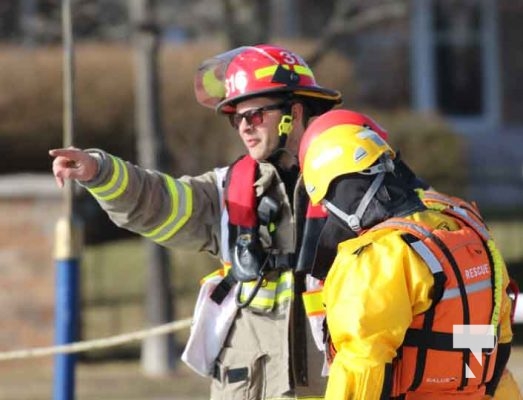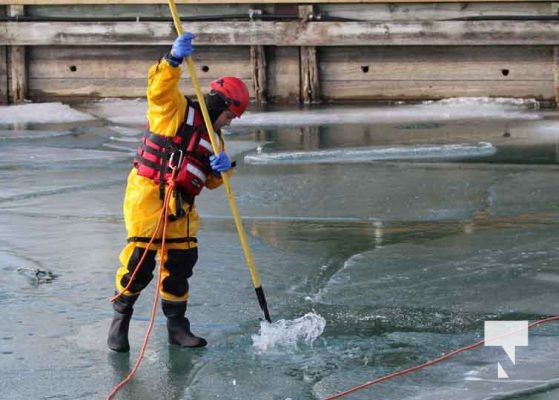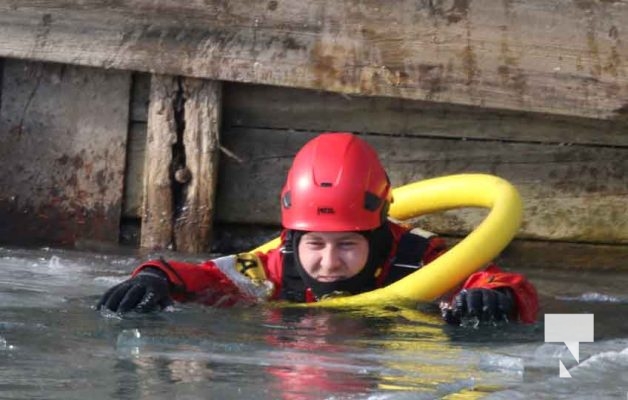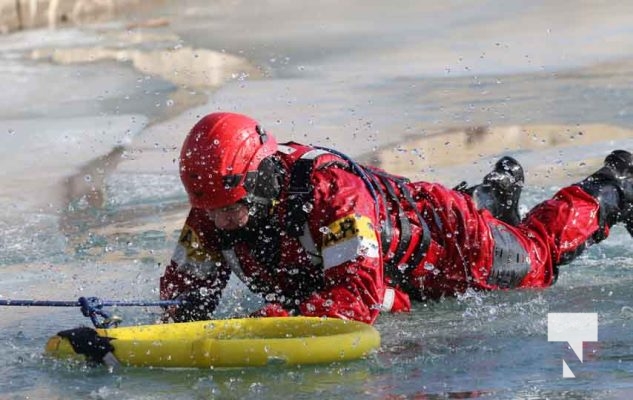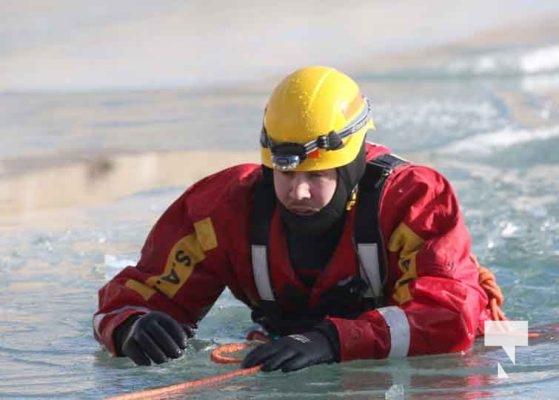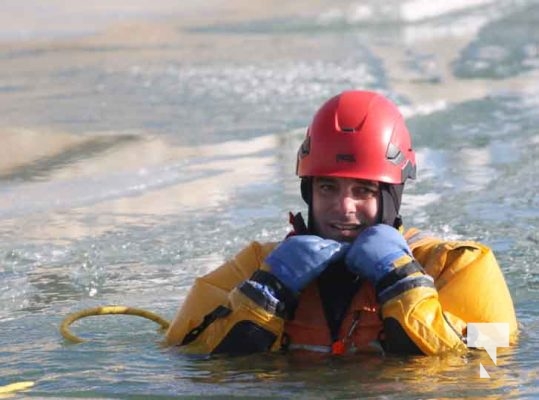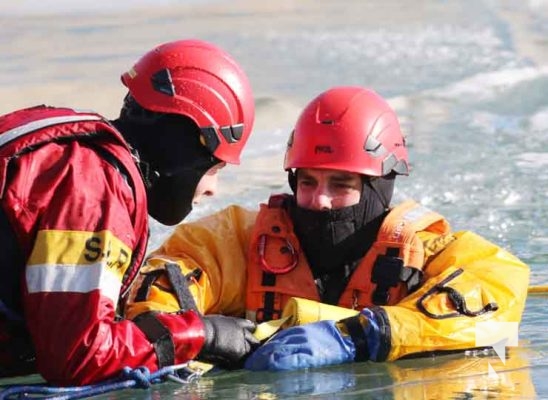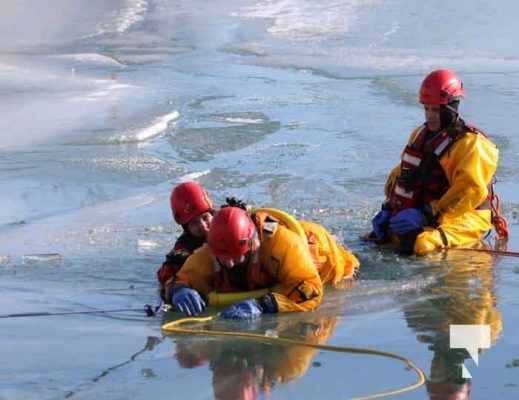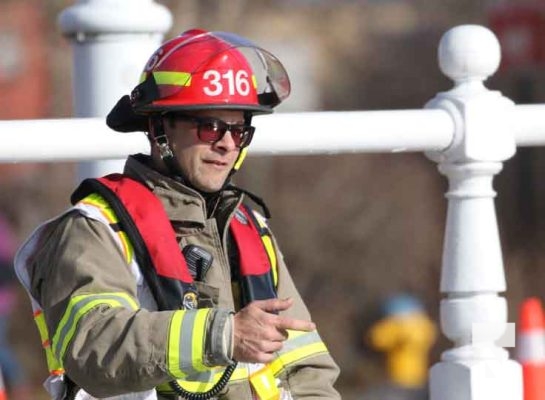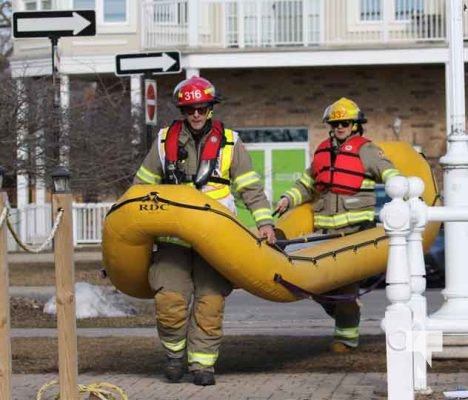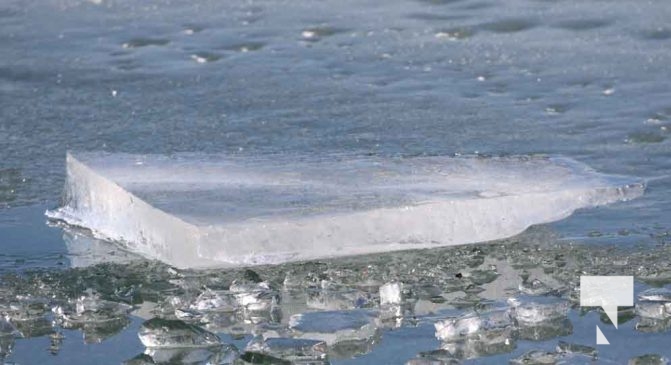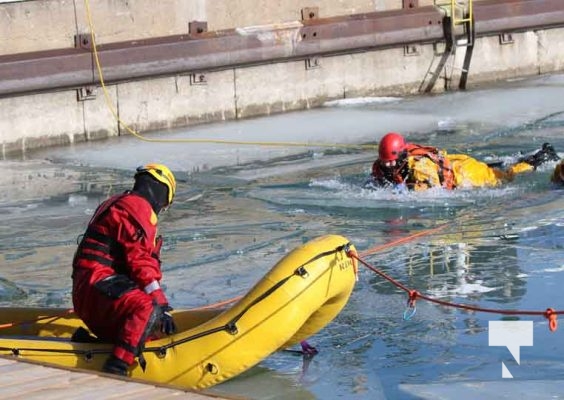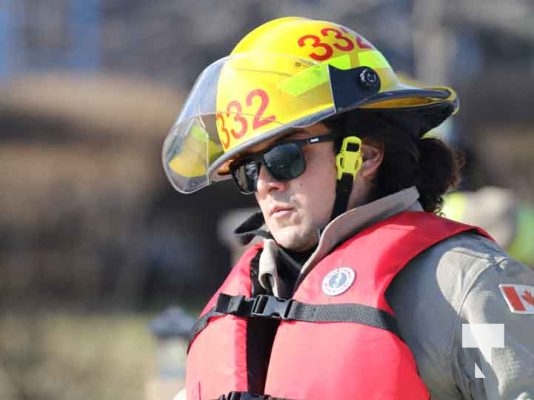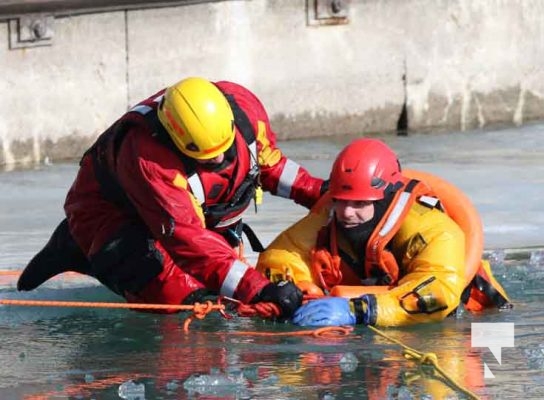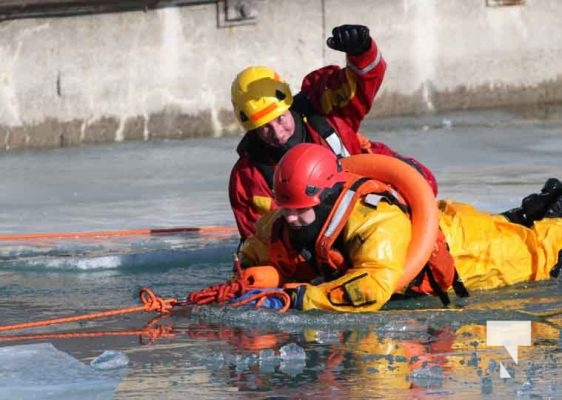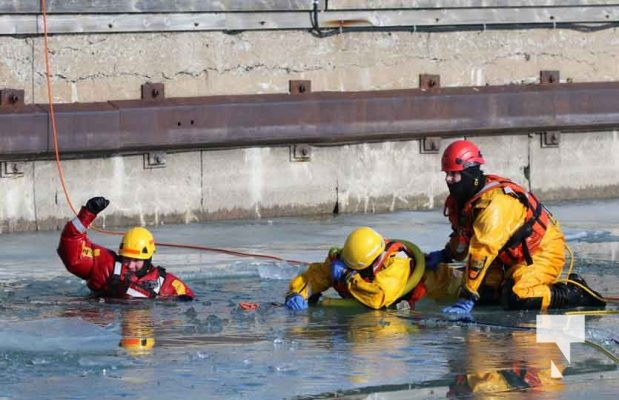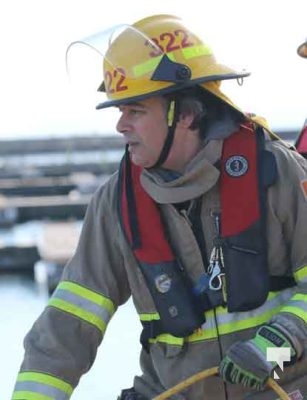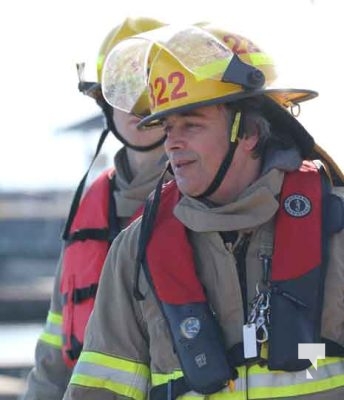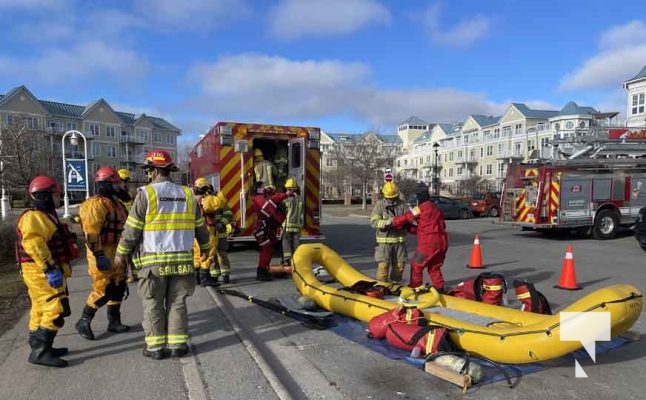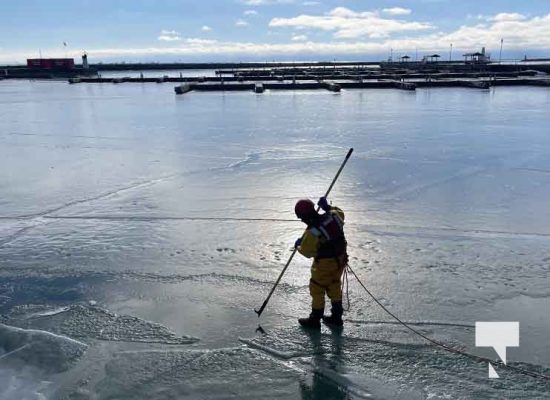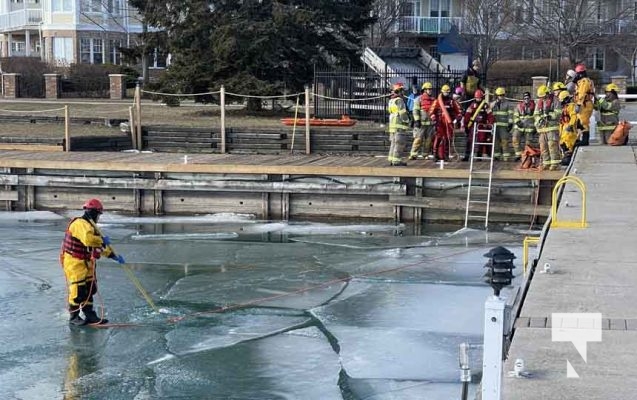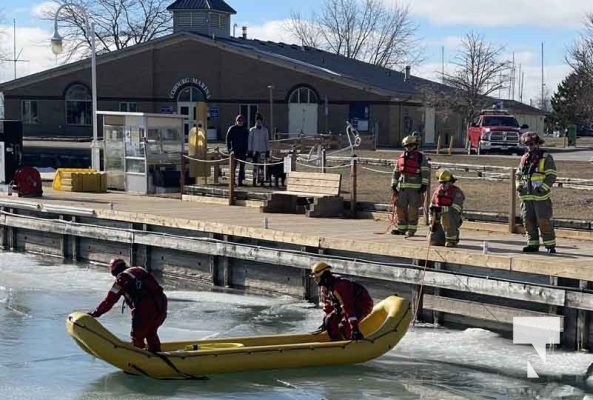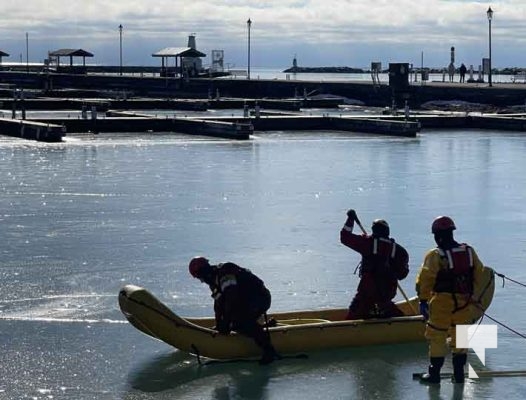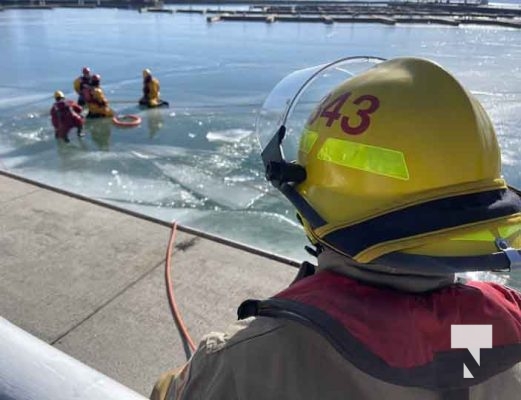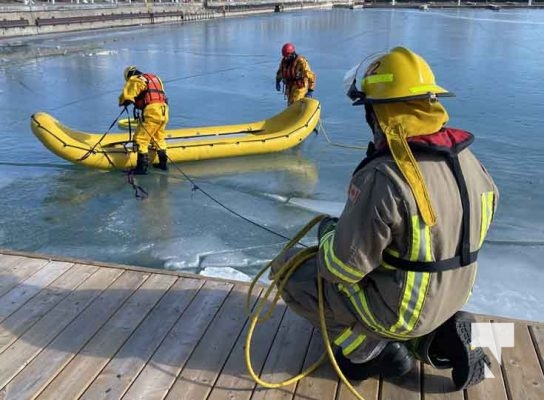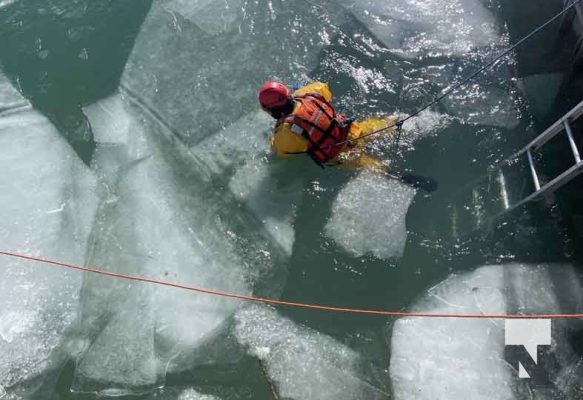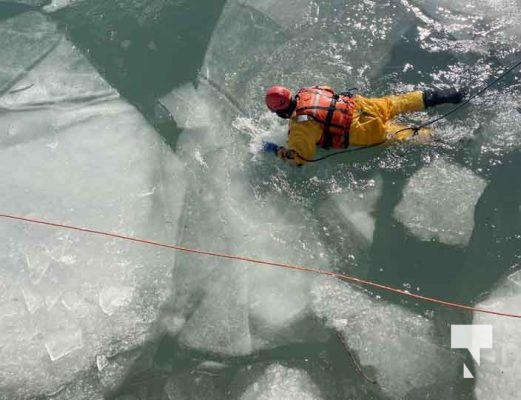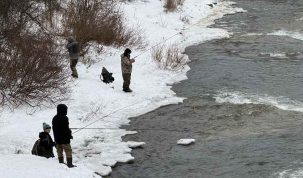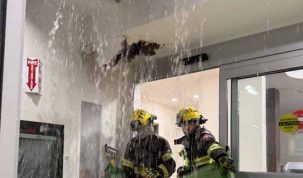Members of the Cobourg Fire Department spent most of the day on Sunday, February 5, 2024 practicing ice water rescue at the Cobourg Harbour.
Acting Captain Sorab Bulsara said, “no ice is considered safe ice.”
“It might look a foot thick, but it could only be an inch thick is some places.”
With the fluctuating temperatures this year, the thickness of ice can vary.
“The freeze and thaw can make the ice look a little deceptive. It might look thicker than it is, but there is going to be a layer of snow in there – it makes it difficult.
All members of the fire service are re-certified each year including a number of new members. Wearing ice water immersion suits members of the department practiced extracting themselves from the water along with getting accustomed to the suits.
Communication with the patient is also important to relay to them what will be happening during the rescue. Firefighters also use hand singles when on the ice to communicate with firefighters on the shore. It’s not uncommon for the victim to be a distance away from the shore and hand signals are imperative during a rescue.
Firefighters also worked as teams and used a inflatable rescue boat to rescue victims from the water.
Ice conditions on Sunday were near perfect for training because there were some areas were thin and some thicker.
“We have a little bit of open water and we also have ice that’s broken up which is perfect. Big, thick ice, people don’t fall through, it’s usually this kind of ice where people can go through.”
Bulsara explained firefighters have a one-ten-one rule if you do fall through the ice.
A person has one minute to get their breathing under control.
“Anyone who has been in a cold shower or cold pool, you lose your breath a little bit.”
A victim has 10-minutes of meaningful movement.
“So any sort of cold water like this you have 10-minutes where you can do something to help rescue yourself.”
A victim has one hour before hypothermia sets in.
“It’s where you become incapacitated or something worse. The last hour is only applicable if you have a life jacket on. Here people don’t walk on the ice with life jackets on.”
Bulsara said it’s important to try and stay calm, get your hands on the ice and try to kick your feet and pull yourself up and out of the water.
If that doesn’t work, hopefully someone is going to call for help.
Even during training on Sunday, safety was paramount and all firefighters who were on the ice were tied to a rope being held by a firefighter on shore.
All members of the fire department on shore were wearing life jackets during their training.


